How the West Was Won – With The Musket
Modern firearms are amazing engineering creations, embodying a large number of incremental technological advances in one finely machined tool. The firearms of our ancestors were nowhere near as effective as the ones we have today.
If we look at the earliest firearms made, their slow fire rate and lack of accuracy mean they are no longer used today. As we know, those early firearms were replaced time and time again by better, more accurate models, leading to what we have today.
At the founding of our nation and on through the time of the Civil War, the musket was the firearm in use. This term is actually a rather general one that encompasses a number of different models that used more than one firing method.
However, they all had some things in common that made them an improvement over their predecessors yet not as advantageous as the rifles which later replaced them.
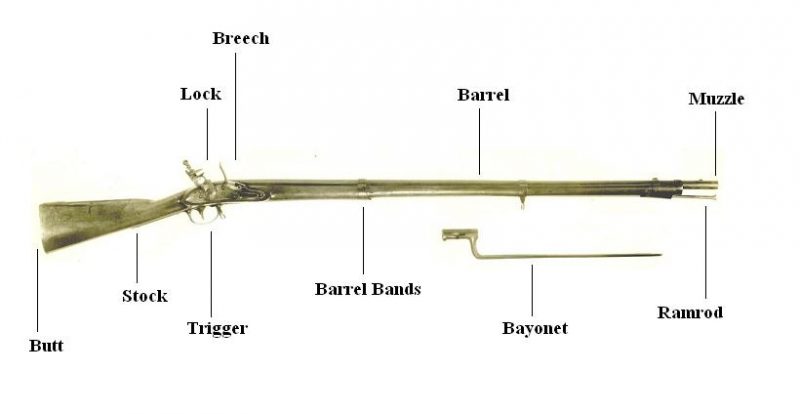
Muskets were smoothbore, muzzle-loading, shoulder-fired firearms that used black powder and a round lead ball. They ranged in caliber from .69 to .80 inches, with a muzzle velocity of roughly 400-550 mps.
This meant that a musket ball hitting a person didn’t actually cut through them like modern bullets but rather pushed through them. Musket balls could break bones and would actually push them out of the back of the person rather than punching a hole through them.
In part, this accounts for the high casualty rate and the high number of amputations performed by physicians during the Civil War. Wounds created by large-caliber musket balls could actually be worse than those created by modern rifles. Between the severity of the wounds and the primitive level of medical technology, there was little chance of restoring the limb back to health.
Firing a Musket
Firing a musket was a complex process due to it being a single-shot muzzleloader. In the earlier years of the musket, powder had to be measured out in a powder horn and poured into the barrel.
Then, a bullet and wadding were pushed in. These had to be driven all the way down the barrel until the bullet was seated with a ramrod, which was stored underneath the barrel of the firearm. Improper ramming could cause serious problems, so the shooter would drop the ramrod back into the barrel after pushing the shot down. They could then tell by the sound whether the ball was fully seated or not.
With the barrel of the musket prepared, a small amount of powder was poured into the pan, adjacent to the breech. Finally, the musket was cocked and ready to fire. A small hole in the pan allowed the spark from the powder in the pan to reach the larger charge of powder inside the breach, and this fired the musket.
The normal fire rate for an average shooter was considered to be one round a minute – allowing time to fully reload. Experts using paper cartridges could shorten that time to the point of getting three shots per minute.
As time went on, paper cartridges were developed for the musket. Early cartridges only contained the premeasured powder charge, but later ones also included the bullet. This speeded up reloading considerably as the shooter merely needed to tear off the end of the cartridge with their teeth, pour the powder into the muzzle of the musket, and then push the bullet and paper into the muzzle allowing the paper to act as wadding for the ball.
Smooth Versus Rifled Bores
There were some problems with muskets being smooth-bore weapons. The lead ball was slightly smaller than the inside of the bore, and the excess space was taken up by wadding of either paper, cloth, or soft leather.
This made for inconsistent contact between the barrel and the ball, causing it to turn slightly. As the ball exited the muzzle, the last point of contact would slow that side of the ball ever so slightly, causing it to angle off in that direction.
This last point of contact was irregular and depended on the actual ball, the wadding, and how it was tamped down. So, the shooter never knew in which direction the ball would veer, nor how much. Combined with the normal drop of the ball, which was amplified by the slower muzzle velocity, this limited the musket to being a weapon with a range of no more than 200 yards.
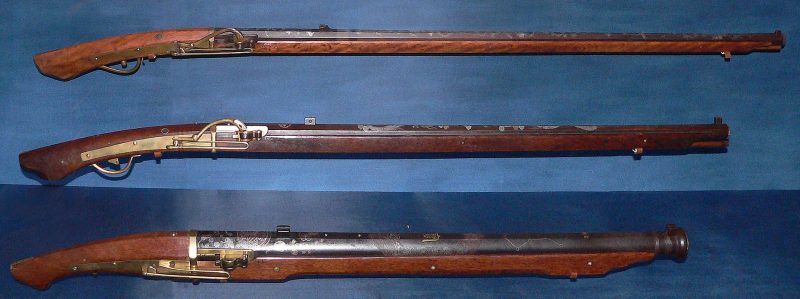
While the musket was the most fearsome personal weapon of the day, the inaccuracy was troublesome. There were many a battle where a rank of infantrymen took aim and fired at the opposing army, only to find that none of their shots hit home.
Modern rifles have spiral grooves cut into the inside of their barrel, called “rifling” (hence the name). These put a spin on the bullets, ensuring that they have the same spin every time they leave the muzzle and thereby increasing accuracy. The spinning bullet would cut through the air neatly.
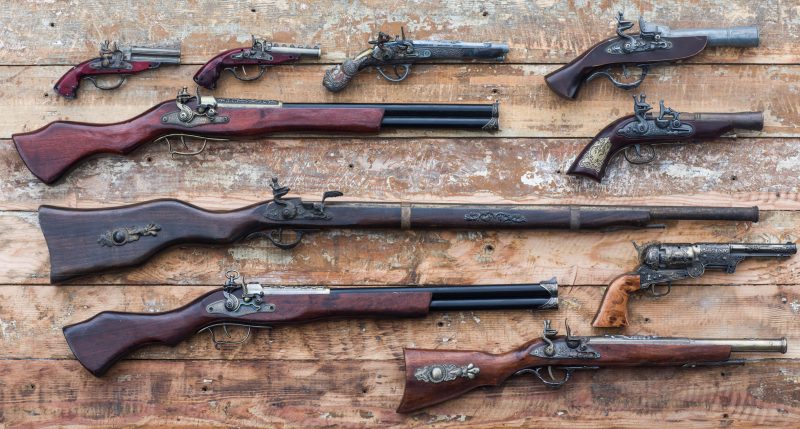
At the same time that rifles were invented, the miné ball was also invented. This was a bullet roughly the same shape as the bullets used in modern pistols. It fit snugly inside the barrel, which was necessary to ensure that it engaged with the rifling grooves cut into the barrel.
The back part of the miné ball was hollow and formed to create rings (somewhat like piston rings), which were filled with grease to eliminate the need for wadding. As pressure from the expanding gas reached the miné ball, it would expand and engage with the rifling.
The idea of rifling didn’t originate from the rifle but from archery. Fletchings for arrows are not attached exactly parallel with the shaft of the arrow but rather at a slight angle, causing the arrow to spin in flight. This provides more stability to the arrow and increases accuracy.
Because of this, and the problem of the ball tending to veer in the direction of the last contact with the barrel, rifling was added to the barrels of rifles – first just near the muzzle, then later down the entire length.
Breech Loading
Even before rifling, the application of breech-loading technology to handheld firearms put an end to the musket. Breech-loading actually goes back as far as the 14th century, where it was used on swivel guns for ships. These breech-loader swivel guns were used in an anti-personnel role: to clear the deck of the ship from boarders. Heavier cannons used against enemy ships were not breech-loading.
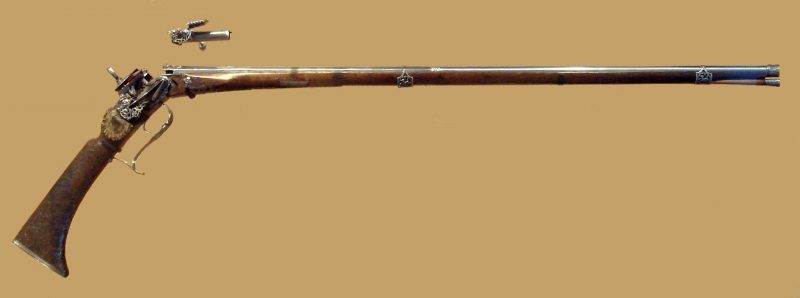
The first breech-loading muskets quickly proved their worth because they could be reloaded fast enough to allow a firing rate of six to eight rounds per minute. They required slightly different paper cartridges as these were not rammed down from the muzzle but rather pushed into the chamber when the breech was opened.
The first truly effective breech-loader was the British Ferguson Rifle, a hundred of which were used in the American Revolutionary War. It used a threaded breech with the trigger guard serving as the crank to raise and lower the breech block. While highly effective, the Ferguson had some problems with reliability as the thin material of the stock would tend to break around the breech.
Firing Mechanisms
One of the biggest variations in muskets were the firing mechanisms. Early muskets used a matchlock. Before that time, shoulder-fired firearms were known as the harquebus (or arquebus), which literally meant “hooked gun” because of a hook on the gun which engaged with a mount to transfer the recoil.
The harquebus was fired from a match rope – a piece of cordage that would smolder and provide heat to ignite gunpowder (black powder) placed in a pan. At about the time the harquebus was replaced by the musket, the matchlock was invented. This was the first firearm with a trigger, which would drop the end of the match cord into the pan to fire the gun.
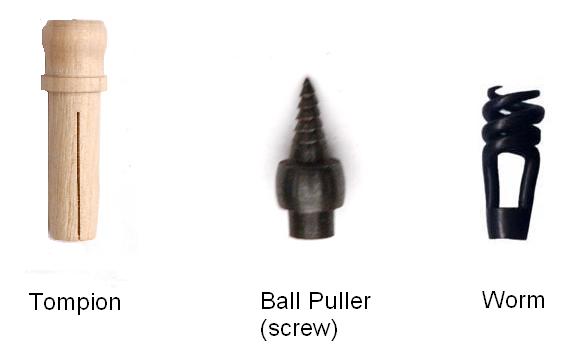
While the matchlock worked, it was tedious to use. The shooter had to remove the cord from its clamp, blow on it to remove any soot, and then reclamp it between every shot. Something quicker and easier was needed.
That “something” ended up being the flintlock. While there were other developments in the meantime, such as the wheellock, the flintlock became popular enough to survive for almost 200 years.
The flintlock counted on flint striking steel to create a spark. The piece of steel that was struck was part of the cover of the powder pan, so pulling the trigger would both remove this cover and provide a spark. There were several advantages to this. Not only did this make it quicker to fire, but the mechanism also provided protection for the powder in the pan for a longer period of time.
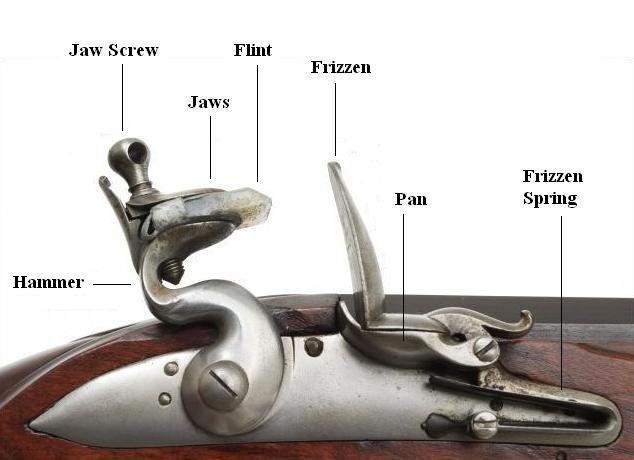
At the very end of the musket period, the percussion cap was introduced. This is much like the primer used in modern cartridges, but the major difference is that they were individually loaded into the gun, much like pouring the powder into the pan. The percussion cap made for faster reloading and meant that a gun could be kept primed for use without being as susceptible to rain or moisture in the air.
In a Survival Situation
While the musket seems to be worthless to us today, they could become useful in a long-term survival situation, such as the aftermath of an EMP (electromagnetic pulse). The simpler design of the musket would make it possible to make one without an entire firearms factory.
Lower pressure in the barrel and breech would make it possible to use pipe rather than finely-machined steel. Black powder can be made and lead balls can be cast.
This is not to say that it would be easy, nor would a homemade musket be as effective as any modern rifle. It is merely a possibility for a time of desperation.
For short-range hunting and defense, a homemade musket would be more effective than being unarmed, although I think a bow would probably be more effective.





